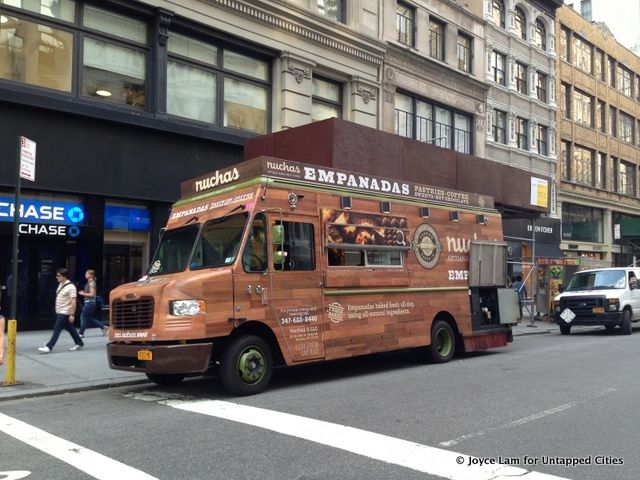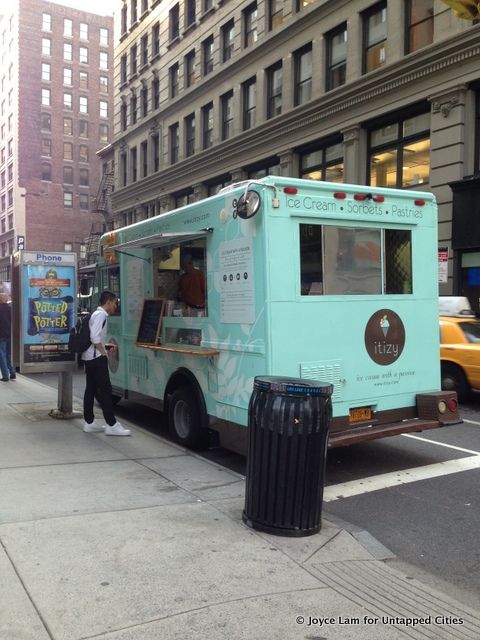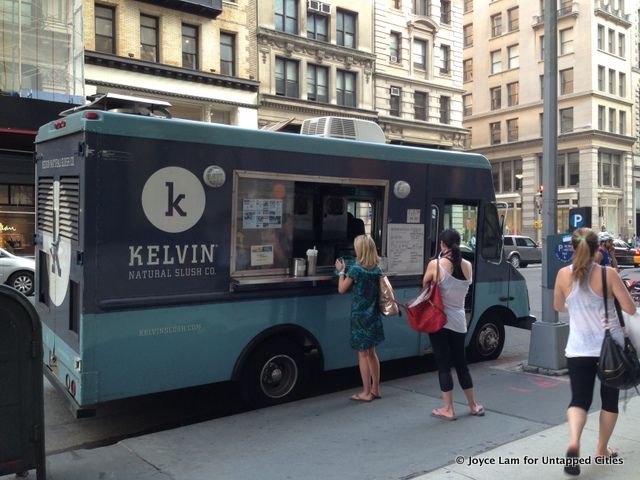Last Chance to Catch NYC's Holiday Notalgia Train
We met the voices of the NYC subway on our nostalgia ride this weekend!


New York’s history of mobile food trucks is longer than one would think; it dates back to as early as the 1600s, when New Amsterdam, now New York City, began regulating street vendors selling food from push carts. In 1893, a night lunch wagon operated by the Church Temperance Society served hot meals to the working class during their graveyard shifts, offering a tastier alternative to eating at the local saloon.
Fast forward to the late 2000s: West Coast’s iconic Kogi BBQ Taco Truck arrived on the scene and spawned a cult following, its success inspiring a food truck movement across the United States. Now, most mobile food vehicles come equipped with sinks and fridges, and other fancy kitchen gadgets if space permits. While eating street food is no new concept, the street food scene has evolved since its humble beginnings. The industry has significantly expanded, to the point which even real-time food truck maps exist so foodies can track their favorite vendors.

Despite the mobile food industry boom, getting a food truck license isn’t easy, and many challenges still exist, as Rembert Browne previously reported for Untapped. Here are the requirements in order for someone to own and operate a food truck:
• Apply for a full-term (two year) Mobile Food Vendor License (MFVL), which can take up to 2-3 months to obtain.
• Apply for the Authority to Collect Sales Tax in New York State (you have to file quarterly or face a fine, even if you haven’t made any sales yet).
• Take an 8-hour food handling course from the Department of Health.
• The hardest part: obtain a Mobile Food Vending Permit in order to vend on Manhattan’s streets. Like the MFVL, the permit is valid for two years.
According to the NYC Food Truck Association (NYCFTA), the processing time for acquiring a citywide vending permit is extremely lengthy because of the waitlist. However, there are faster ways (legal and illegal) for aspiring food truck owners to achieve their dreams. People can apply for a restricted area permit without any wait time, in which case their proposed mobile food unit would be situated in the city’s parks. A riskier solution is to purchase a permit from the black market for as much as $20,000, or more commonly, rent permits from other vendors. Illegal as it may be, given the competitive landscape of the street vendor business, everyone acknowledges that it happens.
After the initial struggle to obtain licenses and permits, food truck owners can find themselves in the midst of a waging war for parking spots. Food truck wars are no surprise given Manhattan’s limited parking, and the battle for a space reveals a dog-eat-dog world in the street vendor community. In one instance, Rickshaw Dumpling Truck allegedly claimed Frites ‘N’ Meats regular spot without any notice, causing a rather nasty dispute between the two truck owners. Fortunately, not all food truck owners adopt the “survival of the fittest” mentality–an Untapped Cities interview with Red Hook Food Vendors showcases a more collaborative and communal spirit within the vendors based in Red Hook.

Over the past few years, the economic and community impact of food trucks has only been positive, yet the stifling nature of mobile food vendor laws may be preventing the industry from thriving even more. The NYCFTA pointed out that its 50 food truck members contributed more than $2 million to the NYC budget in 2011, and anticipated a contribution of $3 million in 2012. Several have made the leap to prompted brick and mortar restaurant locations, like Big Gay Ice Cream.
NYCFTA recognizes these wins, and aims to “advocate on behalf of food trucks with local and state government for fair laws that reflect the changing realities of street vending.” The Street Vendor Project also supports non truck vendors, like pushcarts, street artists, fruit vendors and more. Only time will tell if the regulations will adjust to meet the vendor culture that is so permeated in New York’s contemporary city life.
Subscribe to our newsletter